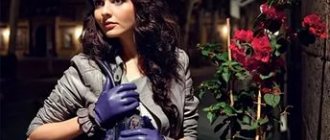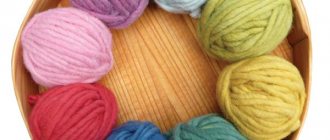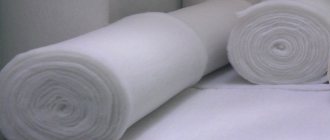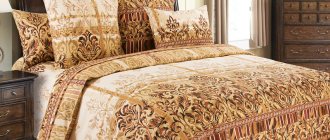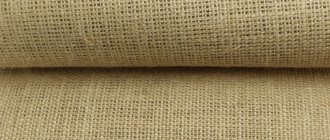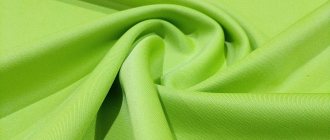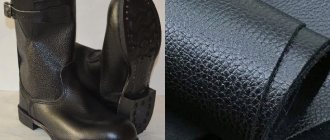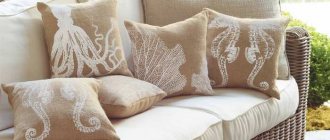How did Angora appear?
Angora wool has always been considered the queen of fabrics because it provides warmth, beauty, and comfort. Many people are interested in the question: whose wool is Angora? Usually they mean Turkish wool from sheep, but other animals also provide wool. One of them is the Angora goat, “dressed in a luxurious woolen coat” all year round.
Angora wool
For many years, goats lived in Turkey, the province of Angora (Ankara). Already at the beginning of the 19th century. Europeans appreciated and began to wear things made of angora. Realizing what kind of “gold” this was, the Sultan strictly forbade the export of animals from Turkey. The cost of wool was so high that the Chinese came up with the idea of producing cheaper material from the fluff of wild rabbits called Angora.
Angora is mohair, which translates as “chosen”. Indeed, Angora wool is a very beautiful, durable and at the same time light fabric that feels similar to the touch. Designers call it “comfortable elegance.”
Goat in Turkey
Mohair is a natural fiber. To obtain it, goats that are not yet six months old, or older ones up to 2 years old, are sheared to zero. Then you get the highest quality, soft, silky material. If the wool is taken from an adult animal, it is used only for outer clothing.
For your information! Today, the ban on the export of mohair has been lifted, and angora is sold all over the world.
Application: products
Angora is used in the manufacture of children's wardrobes, sweaters, suits, dresses, coats and scarves. When combined with other types of yarn, angora can be used to produce curtains, pillows, and upholstery. Angora socks remain very popular, they help out in winter frosts. Products made from angora bring a pleasant feeling, create comfort and coziness. Cashmere coat fabric is often used for the production of outerwear. Also read about other types of woolen fabrics in this material.
You can buy angora in any specialized store at a price of 160-220 per m.
On video of dresses made of angora material:
Angora is the fur of which animal?
To truly understand what angora is, you need to understand how it is mined today. Angora down is soft and warm. However, it must be taken into account that the fluff is not securely fixed in the yarn, since silk fibers are smooth and soft. Therefore, angora is usually combined with plain or merino wool, as well as synthetics and acrylic.
You might be interested in what crepe is: characteristics and composition of suit fabric
Angora yarn is light. Combing or plucking is carried out twice a year, and animals are cut and shaved approximately once every 10-13 weeks. Downy hairs are shorter than wool fibers, but very warm and light. The hair of animals is very clean, since the skin secretes a small amount of sebaceous glands.
Angora rabbit
On an industrial scale, only white albino rabbits are mainly bred. The best Angora is produced in:
- Italy;
- France;
- Japan.
For your information! Colored Angora rabbits are bred only in India.
Today, Angora sheep wool mainly refers to mohair. The best angora is used in the production of knitwear, both separately and in combination with other varieties of wool to increase the reliability of the fibers.
The skins of Levantine and Persian Angora goats are used for blankets, carpets, etc., which are also called Angora. Angora is also used for sewing pekhor coats.
How to care for an Angora
Angora wool requires careful, careful care. Some tips for caring for expensive items containing a high percentage of natural fibers:
- Do not allow it to get wet, do not wash even by hand or on a delicate cycle. In case of accidental exposure to rain, leave to dry naturally. You need to lay the item on a horizontal surface and place a cloth under it.
- From time to time, such items are sent to dry cleaning, but not more than once or twice a year.
- You cannot iron it with an iron. Wrinkled clothes are hung over the steam on hangers. This will help remove creases and wrinkled areas.
- Store the item in a breathable case on soft hangers. It is necessary to fasten the buttons, align the edges and hang it carefully.
- Mandatory use of moth repellents. They put lavender in bags or sprigs in the closet; the insect hates it.
- Cheap items with a small amount of wool or children's clothing are easier to care for. They are washed in water at body temperature. For washing, use baby shampoo without sulfates, fragrances and dyes. It is diluted in water and the item is immersed there for a few minutes. During this time, turn it over or crush it and knead it. No other action is needed. The item becomes clean when the water has changed color.
- After this, rinse the item thoroughly; this is an important point. There should be no cleanser left on it. Otherwise it will quickly ruin it. The product must be left in the sink so that most of the water drains away. Then the item is gently wrung out with a terry towel and laid to dry, with the same towel placed underneath it. After a few hours it is changed and the clothes are turned over.
- The product must be dried and combed. If the fluff is not the same, you should put it in the freezer for a while. Freezing is also suitable if the product has stretched after washing. With proper care, the item will last a long time.
Angora wool is an excellent option for the cold northern winter. Will warm you up and keep you warm. In summer, it will keep your body temperature normal. When wearing high-quality clothes, only pleasant sensations and memories will remain.
© 2021 textiletrend.ru
Description of Angora fabric
The main qualities characteristic of angora are softness and warmth. Most of the material produced on an industrial scale is white and can be easily dyed if necessary.
Clothing options
Angora or mohair are in great demand today, used for knitting, thanks to which properties such as warmth and individuality are combined in one product. The strengths of the fabric are diminished by the fact that rabbit fluff is short-lived. Over the years, hairs come out of the base, so both fabric and angora knitwear are characterized as mixed materials. The fibers with which angora is mixed are as follows:
- wool, merino for expensive fabrics;
- acrylic for knitwear and yarn;
- viscose and polyester for economy items.
Important! Before buying an angora product, it is important to study the composition of the fabric. This affects the price and characteristics.
Wool may contain synthetics, making the fabric stronger. However, after long and frequent wear, the hairs of the fabric lose their thermal insulation properties. This is due to the reduction in the amount of fluff.
Classification of Angora wool varieties
The bulk of what is sold as angora is cashmere, obtained from rabbit down with the addition of additional fibers. This fabric is not strong or durable. Usually on the domestic market you can find fabric that consists of:
- fluff - 10-20%;
- acrylic thread - 50%;
- polyester - 40%.
You might be interested in: Properties of alpaca as wool fabric: appearance of the material
Cashmere fabric
Sometimes dishonest manufacturers take standard yarn from ordinary sheep instead of down.
Today, angora is most often found in two popular varieties - melange and supreme. In the first case, a material is used that is formed in the process of using yarn into one thread from threads of different colors. The tone of each element of the material is sometimes very contrasting or may differ by several shades. Thanks to the combination of threads of different shades, a patterned version is obtained that resembles the surface of polished marble. The more contrast the threads are, the brighter the knitting will be. This cotton material is elastic and stretches well.
Features of fabric care
Real Angora requires careful care.
Storing clothes in a case
The recommendations are as follows:
- You cannot wash, even by hand, only dry cleaning;
- iron is prohibited, can be ironed over steam;
- store in cases;
- you need to use anti-moth medications.
Cheap items with a small amount of angora are easy to care for. Can be washed in water at 30°C with baby shampoo.
Features of the material and its wear
Mohair is high-quality wool from Angora goats . The surface of a coat made of this material is characterized by softness, shine, fleecy and flowing texture. The thing itself turns out to be warm and relatively light in weight.
Angora goes best with natural fabrics, leather, fur and suede .
Reference! The use of knitwear is allowed, but it should be based on viscose or acrylic, and the material itself should not predominate. For example, a collar or cuffs can be made from it.
The most popular styles:
- trapezoid;
- with smell;
- high waisted;
- poncho;
- duffle coat;
- oversized;
- cocoon.
This material is not suitable for lovers of strict classic shades, since even in basic colors the coat will have a slight shine. But angora can be dyed very well, so lovers of brightness can enjoy a wide choice among single-color, two- and three-color items, with flowers, in the futuristic style and with animal prints.
Positive and negative sides
Angora has many advantages, but there are also disadvantages.
Fibers close up
Positive sides:
- fluffy, tender, comfortable;
- shiny and silky, looks beautiful;
- relatively light, almost airy;
- maintains body temperature not only in cold weather, but also in hot weather;
- hypoallergenic;
- easy to paint.
Negative sides:
- fragility, poor wear resistance;
- rubbed;
- afraid of water.
Angora jacket
What accessories go with it?
First of all, we should talk about shoes. Since angora creates additional volume, it needs to be compensated for, so shoes should be miniature, preferably with heels . But even if you prefer only flat soles, refrain from chunky sneakers and trendy ugly sneakers. It is better to limit yourself to sneakers or modest ankle boots in a basic color without unnecessary decorative elements.
But bags fit all shapes and sizes . The main thing is that the material requirements are met and that the colors are combined.
But! It is still recommended to stick to neutral shades so as not to distract attention from the coat.
The requirements for hats are the same as for shoes - no massive ear flaps or fur tails . Otherwise, your face will be lost against the background of all this splendor.
Where you can allow yourself to “diverge” is in the choice of scarves . Everything is appropriate here: from minimalist scarves to giant knitted snoods. And this is the only thing whose color can be brighter than that of a coat. So experiment to your heart's content!
As you can see, an angora coat requires certain wearing rules. However, if you follow them, you will create a stylish look that will captivate everyone.
Reviews
The opinions of people who rated this wool are mostly positive:
Irina Valerina, 39 years old, Kazan: “I’ve been wearing things from angora for many years. The wool is not itchy, warm, and does not stretch. The secret to longevity is proper care.”
Marina Pugovkina, 51 years old, Stavropol: “I have loved mohair things since Soviet times. Nowadays it’s difficult to find high-quality wool, so I knit it myself. Angora is also good for the joints and lower back.”
Thus, angora is a real and high-quality material that has many positive qualities. Things are made from it for both adults and children. But there is one significant drawback - special care.
